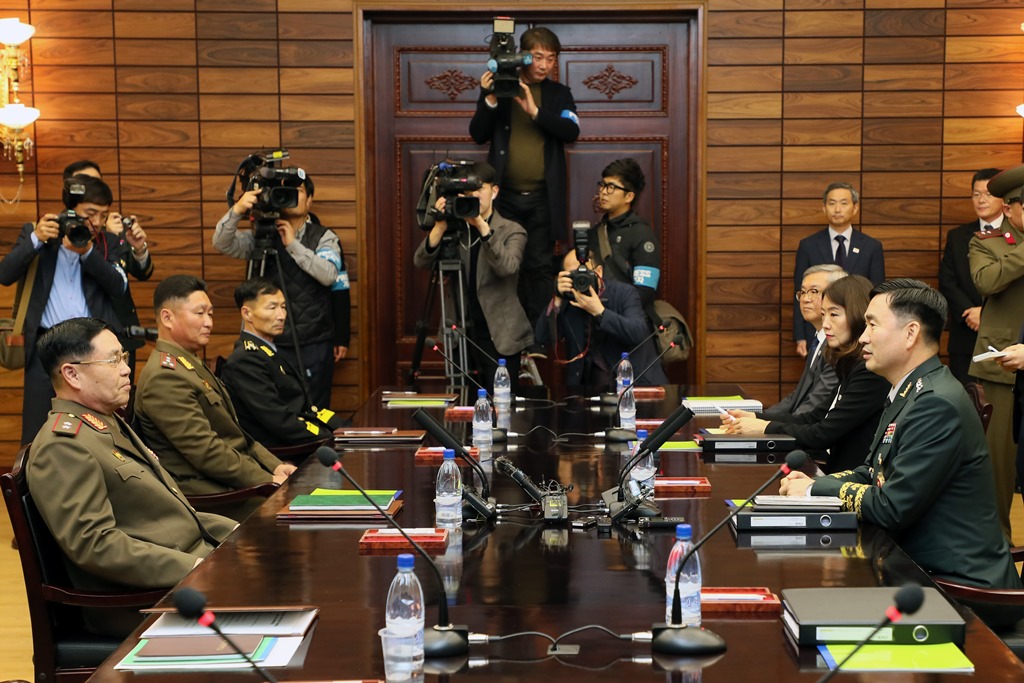Kim-Trump Summit: No Breakthrough in Hanoi

Why was there a summit?
This was the second meeting between North Korea’s Kim Jong-un and U.S. President Donald Trump, following the Singapore summit in June last year. The first meeting ended with vague declarations about a willingness to improve bilateral relations, achieve denuclearisation, and build a “lasting peace regime” on the Korean Peninsula. Over the next eight months, though, North Korea and the U.S. failed to make progress in the negotiations on clarification and implementation of the Singapore joint statement. In recent weeks, working meetings were held with greater frequency, prompted in part by Kim’s New Year’s speech in which he confirmed his intent to meet with Trump, which was followed by the U.S. President’s announcement at the State of the Union of the summit date with the North Korean leader. In preparation for the Hanoi summit, Kim visited China.
What is known about the expectations of the parties?
The U.S. wanted its observers to gain access to all installations at the Yongbyon nuclear facility in North Korea and other sites related to the development of the North’s nuclear programme. In return, the U.S. was ready to begin a gradual lifting of sanctions against North Korea. The North was probably ready to provide only selected installations at Yongbyon and formalise at the international level the moratorium on nuclear and long-range rocket tests announced in April 2018. In return, North Korea expected the abolition of a significant portion of the sanctions, especially those adopted by the United Nations Security Council after 2016. It is possible that the U.S. and North Korea also discussed a declaration of the end of the state of war and the establishment of a U.S. liaison office in Pyongyang.
What happened and why?
There are still very large differences in the U.S. and North Korean positions regarding denuclearisation and the lifting of sanctions. These could not even be overcome by direct contact between the leaders. The lack of a definition of denuclearisation, verification details, and a schedule remains a problem. The Trump administration has not yet agreed to a limited deal on the nuclear issue. The U.S. may have mistakenly assumed that North Korea is under sufficient pressure to make serious concessions to the nuclear issue in exchange for abolishing sanctions and opening to economic development. In turn, North Korea mistakenly assumed that Trump would agree to ease the sanctions in exchange for limited efforts at denuclearisation to announce them as a sign of success of its foreign policy. Therefore, both sides organised the summit despite the lack of prior arrangements at the working level.
What will be the next steps for the U.S. and North Korea?
The U.S. has announced its readiness for further talks but without specifying at what level. The North Korean authorities have indicated that Kim and Trump were to express their hope for a next meeting for an unspecified date, but this was not confirmed by the American side. The lack of success in Hanoi may undermine Trump’s personal commitment to the dialogue with North Korea. Further meetings at the working level are possible but how effective they will be remains unclear. The North has adopted a conciliatory attitude since the summit. It is in its interest to maintain talks with the U.S., regardless of their level. North Korea perceives them as a tool to build trust in bilateral relations.
What does the summit’s result mean for the inter-Korean dialogue?
The lack of progress in the U.S.–North Korea talks is detrimental to the administration of South Korean President Moon Jae-in. Sustaining the sanctions prevents economic cooperation between the Koreas, which Moon is interested in resuming. The situation will probably induce South Korea to intensify the inter-Korean dialogue. After the summit in Hanoi, Trump was to assure Moon that the U.S. is open to further dialogue with North Korea and count on support from South Korea. It would be a similar situation to May 2018 when, after Trump suggested cancellation of the Singapore summit, Moon met with Kim. Moon is likely now to pursue the fourth inter-Korean summit in Seoul. This would serve to show that dialogue is still the most important factor of change on the peninsula and South Korea plays a key role in this matter.




